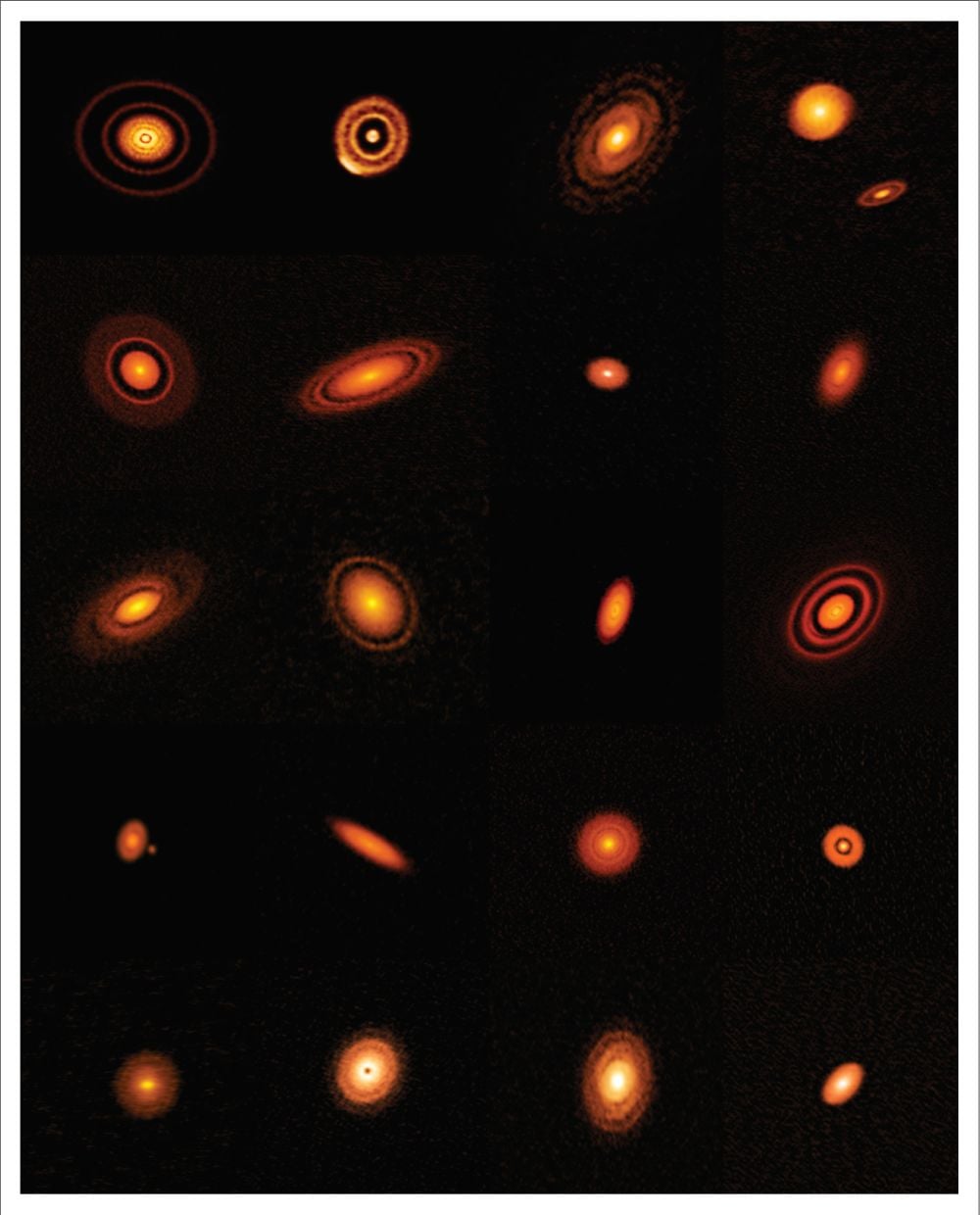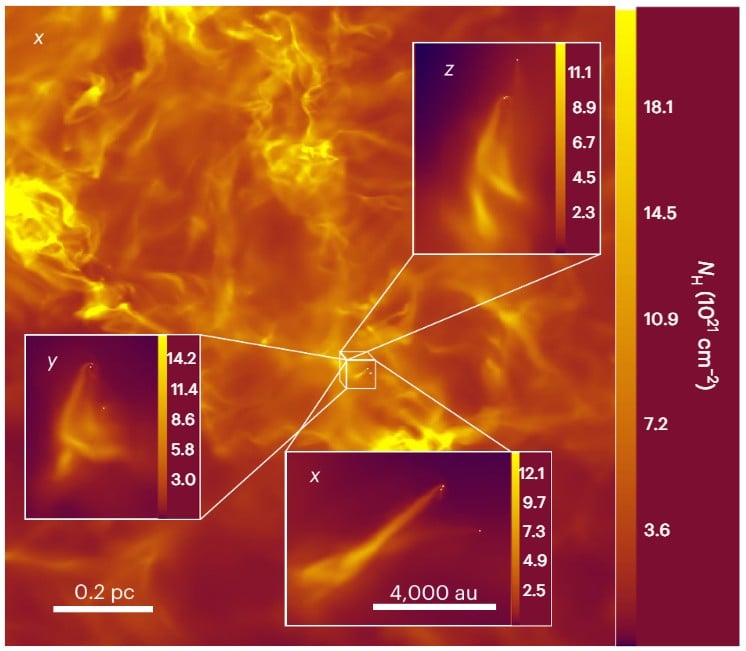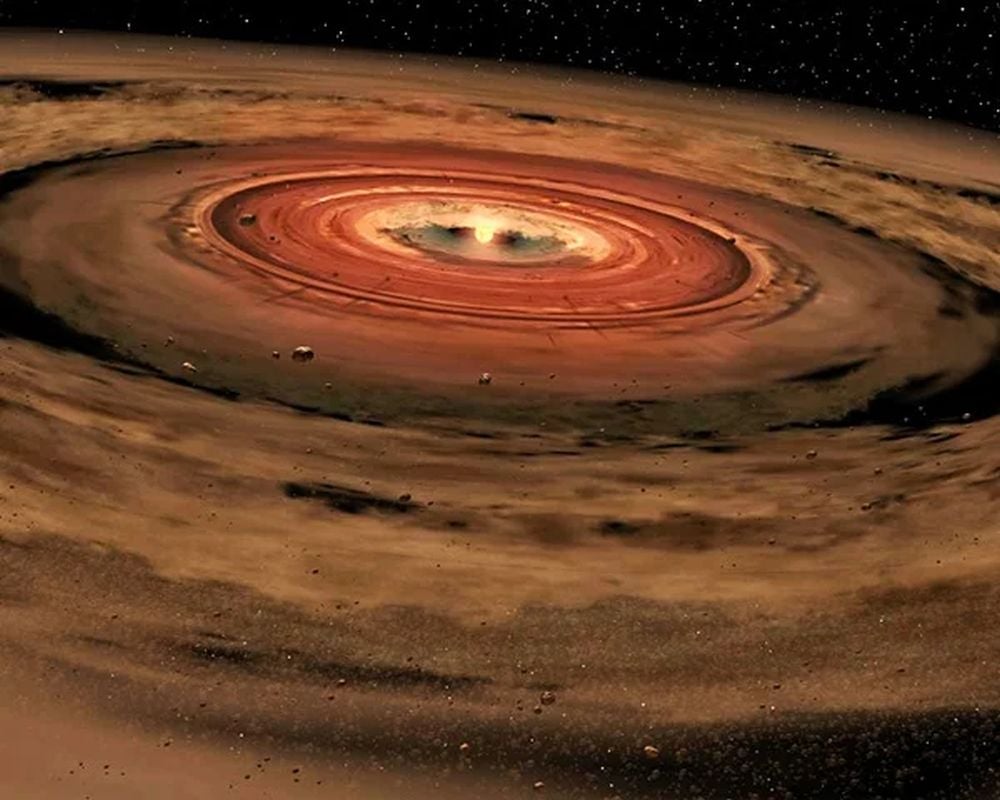As young stars form, they exert a powerful influence on their surroundings and create complex interactions between them and their environments. As they gobble up gas and dust, they generate a rotating disk of material. This protoplanetary disk is where planets form, and new research shows that stars can feed too quickly and end up regurgitating material back into the disk.
Thanks to ALMA, we have a growing understanding of protoplanetary disks. The Atacama Large Millimetre-submillimetre Array (ALMA) has imaged more than 100 of them. It has the angular resolution to study these disks and find the telltale gaps where astronomers think young planets are forming. Before ALMA, astronomers thought these young disks were smooth, but the powerful radio telescope showed us that planet formation begins early.
Through ALMA's observations and other work, astronomers discovered discrepancies. No theoretical model can explain the size of protoplanetary disks (PD) around pre-main-sequence stars (PMS). This "protoplanetary disk size-mass discrepancy" rests on two contradicting observations.
 *These are 20 of the protoplanetary disks imaged by ALMA. Astronomers think each gap is where a planet is forming. Image Credit: ALMA (ESO/NAOJ/NRAO), S. Andrews et al.; NRAO/AUI/NSF, S. Dagnello*
*These are 20 of the protoplanetary disks imaged by ALMA. Astronomers think each gap is where a planet is forming. Image Credit: ALMA (ESO/NAOJ/NRAO), S. Andrews et al.; NRAO/AUI/NSF, S. Dagnello*
ALMA observations show that PD are larger around more massive stars. Yet these same disks dissipate much faster than around lower-mass stars. This brings a paradox into focus: massive stars have larger disks but less time for planets to form.
New research in Nature Astronomy may have a solution. It's titled "The formation of protoplanetary disks through pre-main-sequence Bondi–Hoyle accretion." The lead author is Paolo Padoan, a research professor at the Institute of Cosmos Sciences of the University of Barcelona (ICSUB).
In our current understanding of planet formation in the PD, the PD are considered finite mass reservoirs available for planets. They contain what's left over after a gas cloud collapses into a protostellar core. This understanding places strong constraints on our disk-evolution and planet-formation models.
We propose a different scenario in which protoplanetary disks of pre-main-sequence stars are primarily assembled by Bondi–Hoyle accretion from the parent gas cloud," the authors write. "We demonstrate that Bondi–Hoyle accretion can supply not only the mass but also the angular momentum necessary to explain the observed size of protoplanetary disks.
Bondi-Hoyle accretion describes how an object accretes matter while moving through a gas. It's an extension of simple Bondi accretion, which describes a stationary object accreting mass. In this case, the velocity of the PD supplies the movement.
In Bondi accretion, the accretion of matter is spherical and symmetric. In Bondi-Hoyle accretion, things are more complex. The accretion is neither spherical nor symmetric, and can even create an accretion wake. In this work, Bondi-Hoyle accretion means the young star is accreting too much matter from its surroundings, and some of the matter is returned to the PD.
"Stars are born in groups or clusters within large gas clouds and can remain in this environment for several million years after their birth," said Padoan in a press release.
After a star forms, its gravity can capture more material from the parental gas cloud, which is not enough to change the star's mass significantly but enough to restructure its disk. To understand what mass can attract a star with this Bondi-Hoyle accretion, and the spin and size of the disk induced by the new material, some fundamental properties of the chaotic motion of interstellar gas, known as turbulence, would have to be modelled and understood.
The researchers used simulations and analytical models to dig into this turbulence and to see if it can explain the PD sizes that ALMA has found. This led to a new understanding of the complex interactions surrounding young stars.
Comparing the observable data from the simulations with real observations is crucial to validate the simulations," said ICUCB researcher and team member Veli-Matti Pelkonen. "However, simulations allow us to go beyond the observables to the underlying density, velocity and magnetic field structures, and to follow them in time. In this study, using simulation data, we were able to show that Bondi-Hoyle accretion plays an important role in late-stage star formation by increasing the lifetime and mass reservoir of protoplanetary disks.
 *This figure is a screenshot from the team's simulations. It shows a cube in space holding a triple system of pre-main-sequence stars, with each side of the cube measuring 4 parsecs. The three insets show the tails formed by the Bondi-Hoyle accretion. As the stars orbit, their extended BH tails interweave and twist. The disks around each star are not visible as they are too small to be resolved in this simulation. The colour scale indicates column density. Image Credit: Padoan et al. 2025 Nature Astronomy*
*This figure is a screenshot from the team's simulations. It shows a cube in space holding a triple system of pre-main-sequence stars, with each side of the cube measuring 4 parsecs. The three insets show the tails formed by the Bondi-Hoyle accretion. As the stars orbit, their extended BH tails interweave and twist. The disks around each star are not visible as they are too small to be resolved in this simulation. The colour scale indicates column density. Image Credit: Padoan et al. 2025 Nature Astronomy*
BH infall onto the PMS is asymmetric, which has a pronounced effect on the protoplanetary disk. Matter that doesn't collide directly with the disk falls into the wake, creating dense filaments, and the interior parts closest to the star fall back onto the disk.
"Because of the rather high density of the infalling gas, its effect can be strongly focused on a limited disk region, causing appreciable perturbations," the authors write in their paper. "On the other hand, because of their low column density, such filaments may escape detection." This emphasizes that ALMA, adept at spotting PDs, can't see these filaments.
Other researchers have detected large-scale flows feeding young PDs, and these results are consistent with that research.
Young stars, their disks, and the planets that form in them are bound to be complex systems, and this research emphasizes that. The research also shows that we have a lot to learn.
"If further confirmed by future observations, this alternative scenario will compel major revisions of current disk-evolution and planet-formation models," the authors write.
These details are extremely difficult to observe and simulate. Scientists will make progress as supercomputers become more powerful and telescopes advance along with them.
With the increase of the computing power of supercomputers, we will be able to model even more complex physical processes in simulations, further increasing the fidelity of the simulations," said Pelkonen. "Combined with the new and powerful telescopes (such as the James Webb Space Telescope and ALMA, doing unparalleled observations of newly formed stars), these advances will continue to increase our understanding of star formation.
Understanding how stars and planets form is a major research direction in astronomy, and more help is on the way.
Upcoming telescopes like the Giant Magellan Telescope should give astronomers a better look at PD around pre-main-sequence stars. Its angular resolution will allow it to resolve structures in PD that are undetectable by current telescopes. It'll have the power to track changes in protoplanetary disks over time, opening a new window into how young stars and planets form.
More:
 Universe Today
Universe Today
